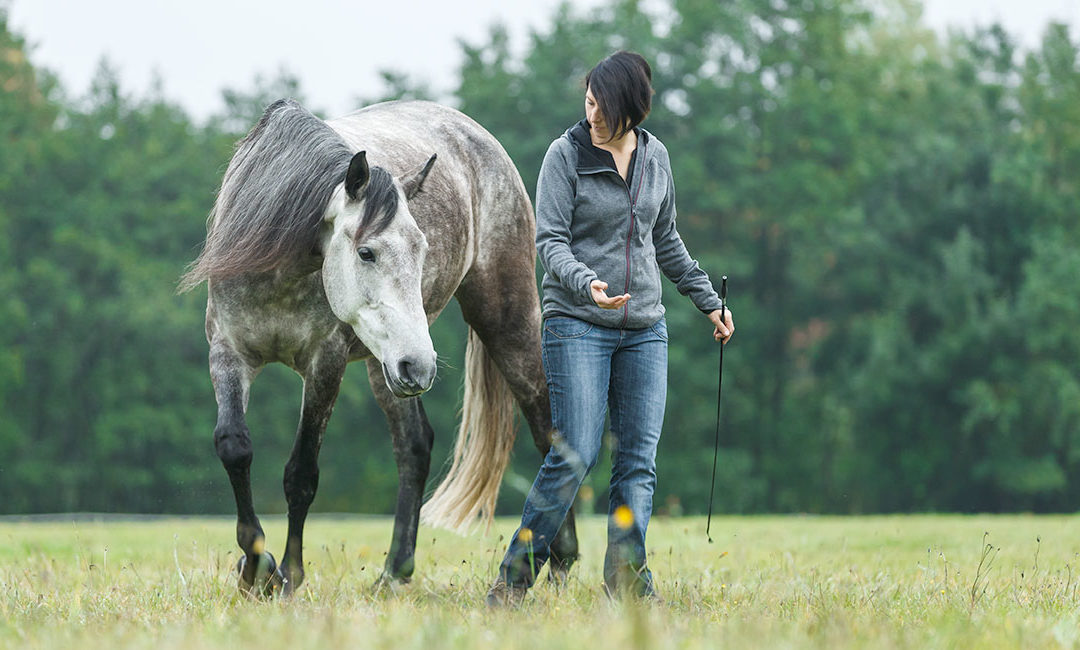Dieser Artikel wurde am 11. Februar 2025 aktualisiert und auf den neuesten Stand gebracht!
One topic becomes more and more important in animal training: giving animals more choice and controlControl (Kontrolle) ist ein fundamentales Grundbedürfnis, da sie einem Individuum die Möglichkeit gibt, aktiv Einfluss auf seine Umwelt und sein eigenes Verhalten zu nehmen. Kontrolle bedeutet, dass Handlungen vorhersehbare und... » Weiterlesen during training and also in their normal life. I think the definition of “choice” is not so easy and changed a lot during the last 10 years. In the beginning of “force free training” or whatever we might call it, we or most people thought, that choice would be defined as “saying no without unpleasant consequences”.
As most people would have trained with negative reinforcement and positive punishment, that would mean without positive punishment. So back then a lot of people thought, that training with positive reinforcement means giving choice to the animal – and for many people this is still true today. But the deeper we dig, the more complex the topic becomes.
Yes, training with positive reinforcement generally means, the animal has more choice and therefore control than in working with traditional training. But just because it’s positive reinforcement training does not necessarily mean that the animal has choice.
By falling into the following traps you might unintentionally restrain the animal’s choice:
- working with high value reinforcers,
- working with high value reinforcers,
- a lack of alternative activities or free ressources available during training
- negative punishmentNegative Strafe oder negative Bestrafung (P-, negative Punishment) bedeutet, dass etwas Angenehmes entzogen oder vorenthalten wird, um die Wahrscheinlichkeit eines unerwünschten Verhaltens zu verringern. Das Pferd verliert eine bereits erhaltene... » Weiterlesen / extinctionSiehe Löschung. » Weiterlesen due to too high criteriaEin Kriterium ist eine klare, einzelne Anforderung, die ein Tier in einem Training erfüllen muss, um eine Verstärkung zu erhalten. Es definiert eine präzise Eigenschaft des erwünschten Verhaltens, beispielsweise die... » Weiterlesen or to withholding the click; mixing quadrants (often without recognizing it), which leads the animal into a cognitive dilemma and can negatively affect the training,
- working with (food) deprivationDeprivation bedeutet, dass ein Tier oder Mensch über einen bestimmten Zeitraum hinweg etwas Wichtiges entzogen wird, was es für sein Wohlbefinden braucht, wie zum Beispiel Nahrung, Wasser oder soziale Kontakte.... » Weiterlesen (some trainers still follow the mantra “ressources need to be earned” to create “obedience”). This can also mean willingly choosing to keep a social animal in isolation,
- and even the time of day can have a huge impact, if the animal gets its meals on a regular schedule.
And this is just the the first level of “providing choice” and a broader definition. There is a lot of space between “absence of unpleasant consequences” and “having more than one pleasant option to choose from”. Such as choosing between different options, without creating a disadvantage for the animal (e.g. choosing “no” under the same conditions as “yes”).
So even when we are training with a cooperation signalEin Signal ist ein Zeichen oder Reiz, der für das Tier eine Bedeutung hat und ein Verhalten auslöst oder einen emotionalen Status hervorruft. Es zeigt dem Tier an, dass es... » Weiterlesen or a “start buttonEin Start-Button ist ein trainiertes Verhalten als eine Art Kooperationssignal, mit dem das Tier aktiv signalisiert, dass es bereit ist, eine bestimmte Handlung oder Prozedur zu beginnen. Es gibt dem... » Weiterlesen”, this needs to be taken into consideration. Yes, it is a good idea for some tasks to give the animal a way to say “yes” to the behavior, for example by adding a start button. But as long as we don’t reinforce the “no” the same way we would reinforce the “yes”, there is still a risk that the animal only takes “yes” because it’s a chain of behaviors and just one option will be reinforced. This is just one example of how difficult it can be.
And there are still some questions I need to think about, such as: “Does choice need a conscious, willing participation, especially when we think about classical conditioning?” Or do we take choice away, when we are just conditioning to a stimulusEin Reiz, häufig auch Stimulus genannt, ist eine äußere oder innere Einwirkung, die ein Lebewesen wahrnimmt und die eine Reaktion auslösen kann, aber nicht muss. Reize können aus der Umwelt... » Weiterlesen? Well, I think this is more of an ethical question, where everybody needs to make up their own mind . After all, we can’t always choose freely and sometimes we can’t even control what we need to train, because some things are just necessary (however, we can choose HOW to train). In any case, it makes sense to think this through and to become more aware of the implications for our training, regardless of how we decide in the end.
So I think, especially with regards to the experience of the trainer/handler, it’s just like the “least intrusive, minimally aversiveAversiv beschreibt etwas, das als unangenehm oder abstoßend wahrgenommen wird und das ein Lebewesen vermeiden möchte. Ein aversiver Reiz kann physisch, sensorisch oder sozial sein. Beispiele: • Ein Pferd kann... » Weiterlesen”-agreement, we should know our options and provide as much choice and control as possible, but at the same time know, that it’s not always possible under all circumstances.
This is just a quick sum-up of my opinion on this topic. Let me know, what you think and if you want to read more about it!

